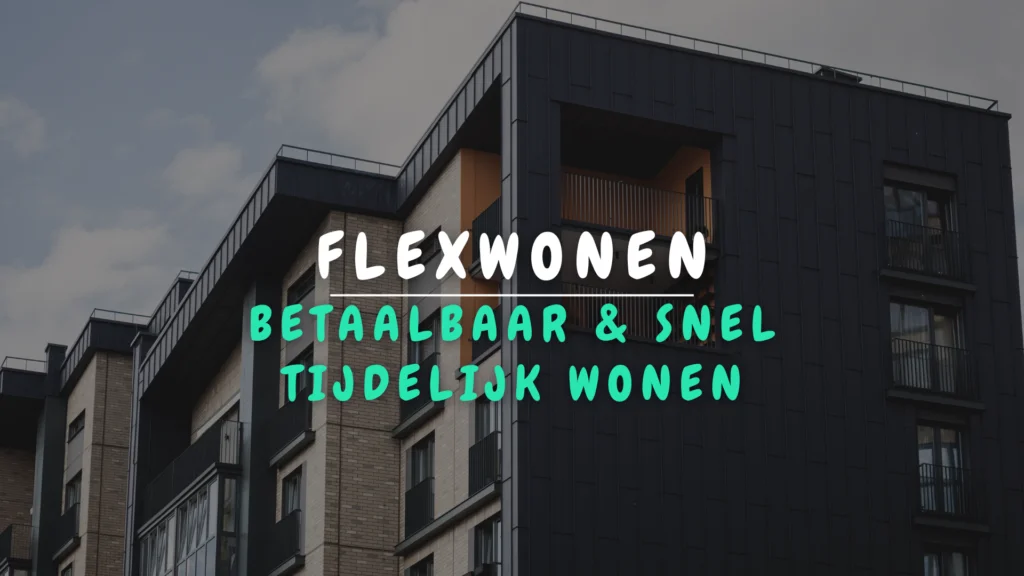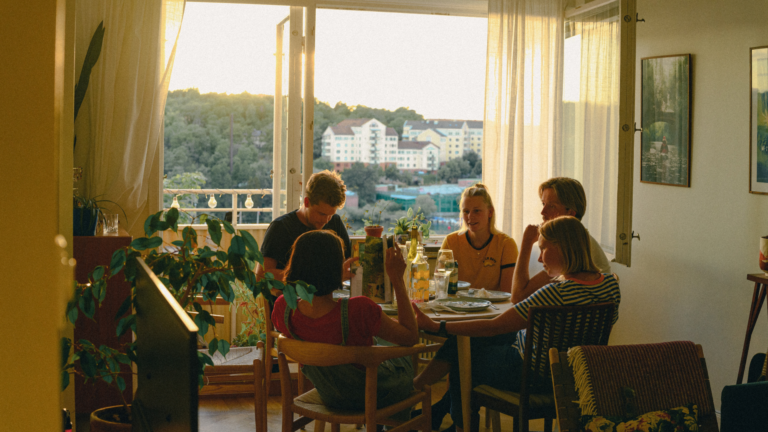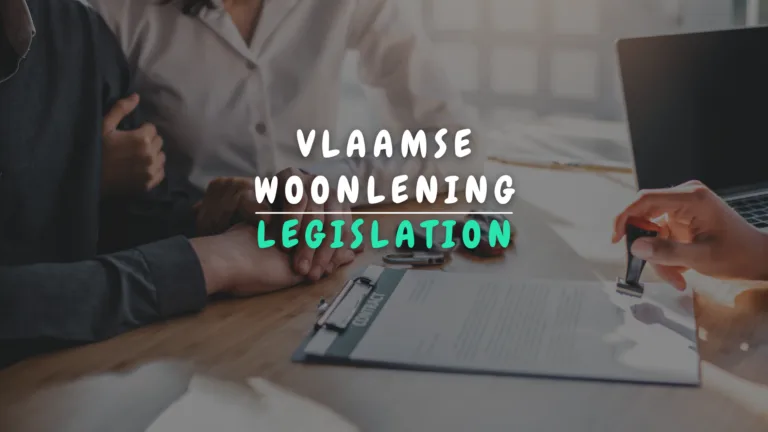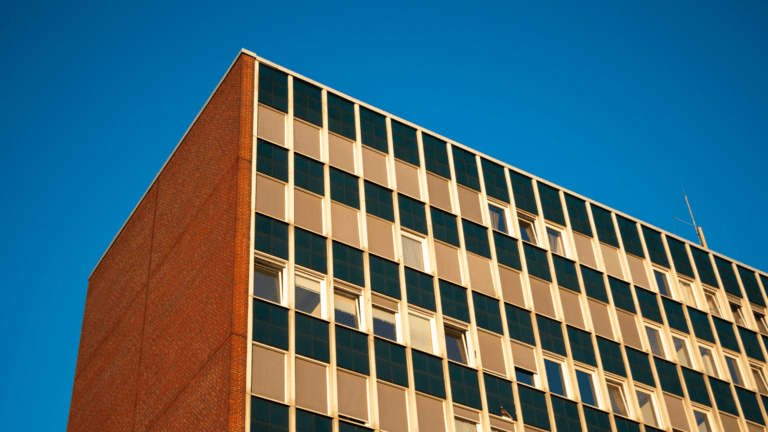With long waiting lists for social housing and high pressure on housing, the Netherlands is turning to flex living. The housing form is blowing over to Belgium. But what exactly is flex living? Who is it for? What are the advantages and disadvantages?
Contents
- What is flex living?
- Who is involved in flexwoon projects?
- Who is flex living for?
- What are the benefits?
- What are the drawbacks?
1. What is flex living?
Flex living is living in a quickly available, affordable yet quality home. The home is usually made of wood frame construction in a factory. Most flex homes are relatively small and are similar to a tiny house (28 square feet of floor space for a single-family household). They are movable, stackable, switchable or splittable.
With flex housing, one of these aspects is temporary:
- The property itself: For example, there are buildings that are not initially residential, that temporarily are.
- Location: The flex housing is often on a site for 10 to 15 years. At the end of this period, people extend the term or move and rebuild the project in another location.
- Occupancy: Residents have a temporary lease with a period of (usually) up to 2 years.
Individual versus communal flex housing
If you’re looking for flex housing, you have a choice between individual or communal housing. Do you want more privacy or rather a sense of community? What is your budget? For communal housing, the costs are lower.
- Individual flex homes: Self-contained housing with all necessary amenities and privacy.
- Communal flex housing: Residents share certain spaces with each other. For example, a shared kitchen, bathroom or living room.
2. Who is involved in flexwoon projects?
There are many parties involved in making, managing and renting. Below we list the five parties:
- Government and municipalities: These regulators regulate the construction and rental of flex housing. They oversee them. The municipality may or may not give projects a building permit. Due to the tightness of the housing market, municipalities often have zoning regulations to address this challenge in their communities.
- Builder and developer: The developer designs, builds and installs flex homes. They must ensure that the homes comply with building codes.
- Owner: The owner has property rights to the properties. The owner is often the municipality, government or developer. Sometimes the homes are in mixed ownership by these parties.
- Administrator: The administrator manages the flex homes on a daily basis. He provides maintenance, repairs, communicates with the residents, etc.
- Residents: The final party is the residents. Depending on the owner or manager, potential residents often have to go through a screening test.
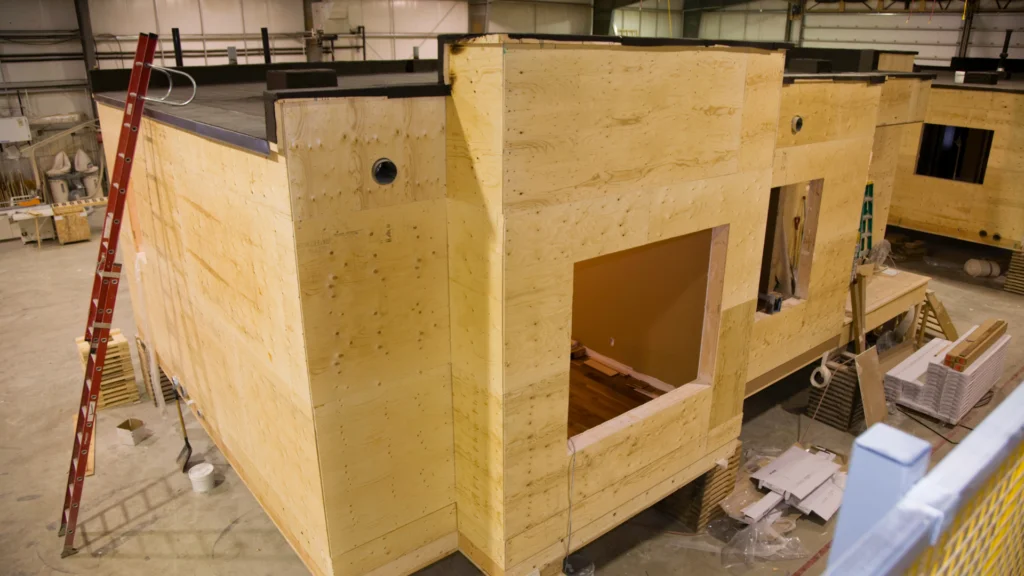
3. Who is flex living for?
People make flex housing available to different groups of people. In the Netherlands, these groups are also called “target groups. Below are the 8 most discussed target groups:
- Students
- Starters
- Temporary employees
- Temporary foreign workers (expats)
- Temporary foreign knowledge workers (knowledge migrant)
- Asylum seekers with temporary or permanent residence permits (status holders)
- People just coming out of divorce
- People exiting from social care, homeless people or ex-convicts (sheltered housing)
3.1. Mogelijke criteria voor kandidaten
- You are urgently looking for temporary rental housing.
- You meet a maximum income limit.
- You have a certain family composition. Some projects produce homes for singles, small families or just large families.
- You’re within a certain age range. Some projects produce homes specifically adapted for seniors, for example.
- You meet background checks for such things as criminal background, creditworthiness and (financial) stability.
3.2. Mogelijke criteria voor arbeidsgerelateerde kandidaten
- You are urgently looking for temporary rental housing.
- You have a valid employment contract and employer’s statement.
- You have a valid residence permit or visa.
- You speak the local language or a language that people understand locally. For example, for the Benelux this includes English, French, German and Dutch.
- You meet background checks for such things as criminal background, creditworthiness and (financial) stability.

4. What are the benefits?
For the builder:
- Faster construction time: One makes flex homes based on standardized designs and modular construction techniques, which significantly reduces construction time. As a result, there are lower labor costs and faster turnaround times for projects. The process takes only about three to six months.
- Flexible design: Flex homes are modular. A flex home consists of several modules, each containing a part of the home. For example, a bedroom, bath and living room. At the construction site, these modules are combined into a complete home. This often makes the layout adaptable to residents’ needs.
- Less waste and nuisance: Prefabricated construction is done in a factory. Here, material use is optimized. And because flex homes are made in a factory, there is less nuisance in the area where the homes are placed and installed.
- Cost savings: Efficient construction methods and the use of prefabricated modules save costs for materials, labor and general overhead.
- Sustainability: One uses sustainable materials and technologies. Flex homes are relatively smaller, so they consume less and thus have a smaller carbon footprint.
- Potential reuse and relocation: Due to the modular and mobile nature of flex housing, the builder easily moves the flex housing to another location.
For the (potential) resident:
- Quick availability: The shorter construction time allows residents to move into their new homes sooner.
- Affordable: The cost-effective construction method often results in lower rents for residents. The all-in monthly rent is usually between 500 and 600 euros.
- Sustainability: Not only is the construction process sustainable, so is the home itself. It is small and has a low ecological footprint. For you as a resident, this translates to a low energy bill.
- Job satisfaction: Work-related candidates (employees) live closer to work. This increases job satisfaction.
5. What are the disadvantages?
- The resident must move again after a maximum of 2 years.
- Even if one makes the best use of the space, a flex home remains small.
- Housing regulations for temporary housing are less stringent than those for permanent housing. When things really have to go fast, people often build the housing with a lower quality.
- Location is not always ideal. People build housing where there is room. On vacant land without an intended function. This is potentially far away from your work or downtown with stores and options for public transportation.
- If you are renting flex housing through an employee contract, you are at great risk. Suppose you are (suddenly) fired, you are also immediately homeless.
- In shared flex housing, you often lack privacy and space. Because it is already a small home and on top of that you share a number of rooms with others, you can quickly feel cramped.
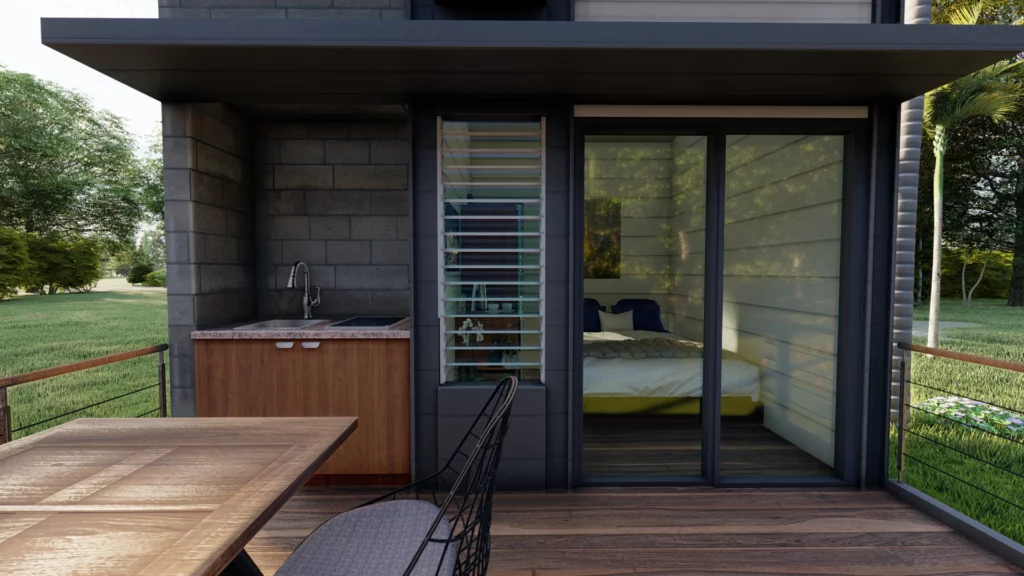
Flex living is a quickly available, affordable and quality housing option. Are you considering this form of housing? Then carefully assess the pros and cons in your specific situation.
Sources: De Meeuw, Flexwonen, Gelderland, Paulus Jansen Blog, RVO, Volkshuisvestiging Nederland, Zeeland
Would you like to cite this article as a source? Then use:
Stiasteny, L. (2024, Nov. 4). Flex living: a Dutch housing concept. Appartement.be. Consulted on (date XX/XX/202X), from flex-living-payable-and-fast-temporary-living/.
Related articles:
